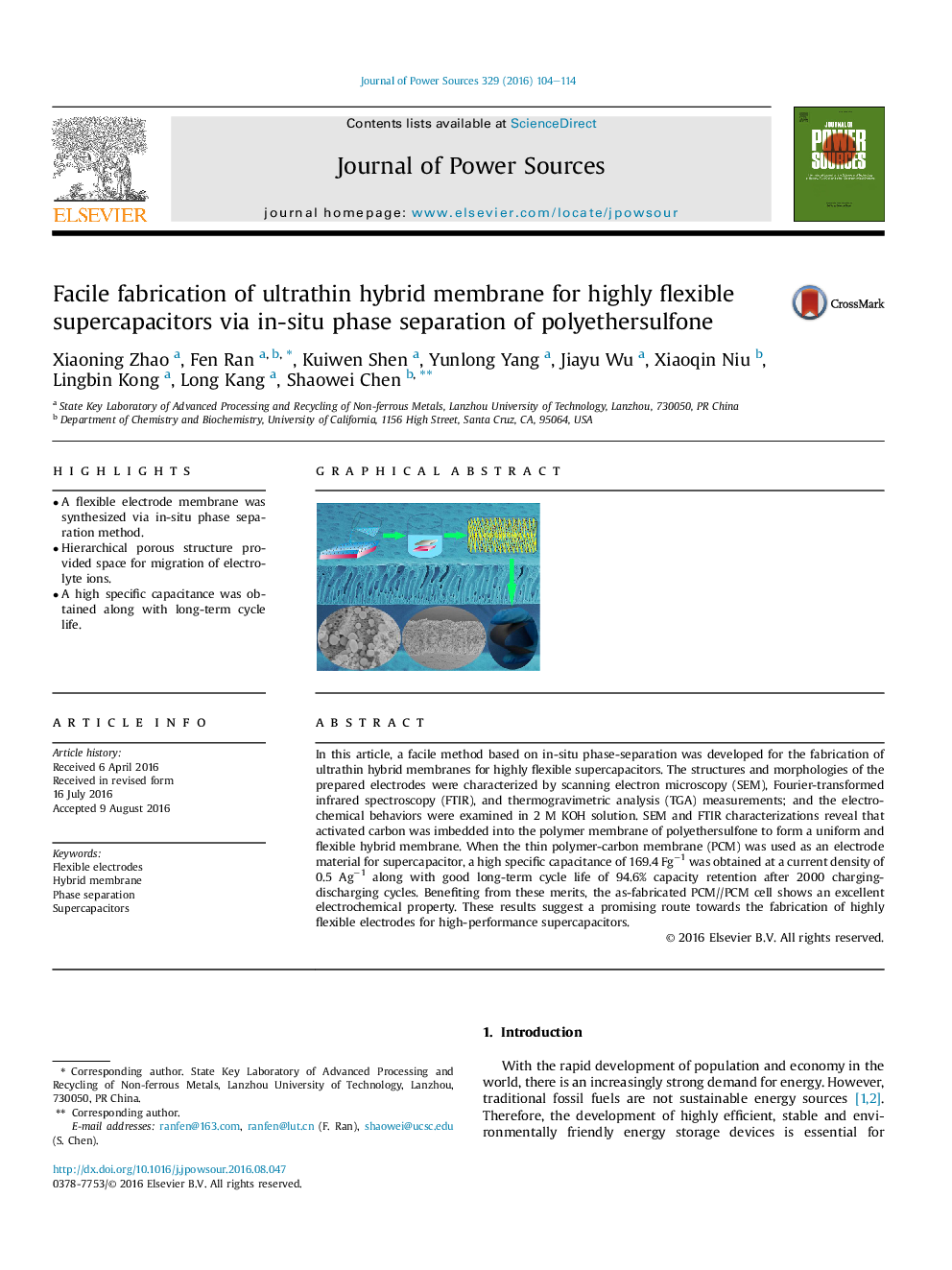| Article ID | Journal | Published Year | Pages | File Type |
|---|---|---|---|---|
| 1283431 | Journal of Power Sources | 2016 | 11 Pages |
•A flexible electrode membrane was synthesized via in-situ phase separation method.•Hierarchical porous structure provided space for migration of electrolyte ions.•A high specific capacitance was obtained along with long-term cycle life.
In this article, a facile method based on in-situ phase-separation was developed for the fabrication of ultrathin hybrid membranes for highly flexible supercapacitors. The structures and morphologies of the prepared electrodes were characterized by scanning electron microscopy (SEM), Fourier-transformed infrared spectroscopy (FTIR), and thermogravimetric analysis (TGA) measurements; and the electrochemical behaviors were examined in 2 M KOH solution. SEM and FTIR characterizations reveal that activated carbon was imbedded into the polymer membrane of polyethersulfone to form a uniform and flexible hybrid membrane. When the thin polymer-carbon membrane (PCM) was used as an electrode material for supercapacitor, a high specific capacitance of 169.4 Fg−1 was obtained at a current density of 0.5 Ag−1 along with good long-term cycle life of 94.6% capacity retention after 2000 charging-discharging cycles. Benefiting from these merits, the as-fabricated PCM//PCM cell shows an excellent electrochemical property. These results suggest a promising route towards the fabrication of highly flexible electrodes for high-performance supercapacitors.
Graphical abstractFigure optionsDownload full-size imageDownload as PowerPoint slide
